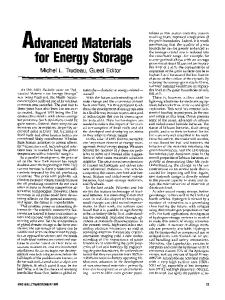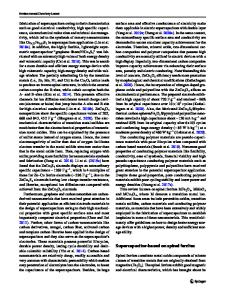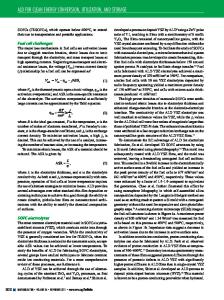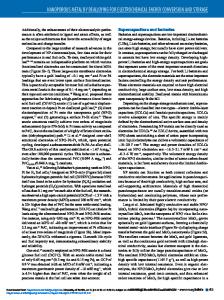Nanostructured Materials for Next-Generation Energy Storage and Conversion
Volume 1 of a 4-volume series is a concise, authoritative and an eminently readable and enjoyable experience related to hydrogen production, storage and usage for portable and stationary power. Although the major focus is on hydrogen, discussion of fossil
- PDF / 13,640,892 Bytes
- 363 Pages / 439.42 x 683.15 pts Page_size
- 42 Downloads / 414 Views
Nanostructured Materials for Next-Generation Energy Storage and Conversion Hydrogen Production, Storage, and Utilization MATERIALS.SPRINGER.COM
Nanostructured Materials for Next-Generation Energy Storage and Conversion
Ying-Pin Chen • Sajid Bashir Jingbo Louise Liu Editors
Nanostructured Materials for Next-Generation Energy Storage and Conversion Hydrogen Production, Storage, and Utilization
With 161 Figures and 19 Tables
Editors Ying-Pin Chen Department of Chemistry Texas A&M University College Station, Texas, USA
Sajid Bashir Department of Chemistry Texas A&M University–Kingsville Kingsville, Texas, USA
Jingbo Louise Liu Department of Chemistry Texas A&M University–Kingsville Kingsville, Texas, USA
ISBN 978-3-662-53512-7 ISBN 978-3-662-53514-1 (eBook) DOI 10.1007/978-3-662-53514-1 Library of Congress Control Number: 2017936057 # Springer-Verlag GmbH Germany 2017 This work is subject to copyright. All rights are reserved by the Publisher, whether the whole or part of the material is concerned, specifically the rights of translation, reprinting, reuse of illustrations, recitation, broadcasting, reproduction on microfilms or in any other physical way, and transmission or information storage and retrieval, electronic adaptation, computer software, or by similar or dissimilar methodology now known or hereafter developed. The use of general descriptive names, registered names, trademarks, service marks, etc. in this publication does not imply, even in the absence of a specific statement, that such names are exempt from the relevant protective laws and regulations and therefore free for general use. The publisher, the authors and the editors are safe to assume that the advice and information in this book are believed to be true and accurate at the date of publication. Neither the publisher nor the authors or the editors give a warranty, express or implied, with respect to the material contained herein or for any errors or omissions that may have been made. The publisher remains neutral with regard to jurisdictional claims in published maps and institutional affiliations. Printed on acid-free paper This Springer imprint is published by Springer Nature The registered company is Springer-Verlag GmbH Germany The registered company address is: Heidelberger Platz 3, 14197 Berlin, Germany
Preface
The purpose of this monograph is to answer questions related to the substitution of fossil fuels in vehicles, home, or industry using hydrogen for either direct use or as an energy carrier in the generation of electricity. It is projected that mobility via electrical means will increase during the next 50 years and will become a significant component of the energy portfolio. A factor in achieving this is the utilization of hydrogen as stored energy, which is appealing because it further addresses greenhouse gas emissions, leads to lower environmental pollution, and will further reduce the dependency on oil from foreign governments. Although there are a number of reviews, special journal issues, and books on hydrogen, none dea
Data Loading...











